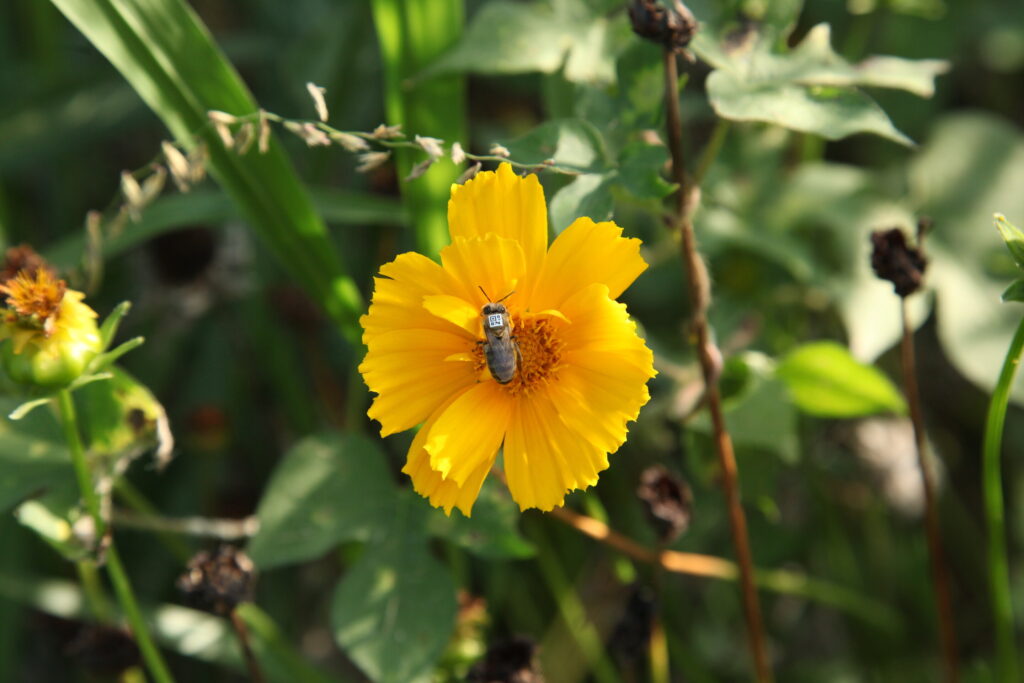
Several genetic variants associated with social behavior in honey bees are located within genes previously linked to social behavior in humans, according to a study by Ian Traniello and colleagues at the University of Illinois at Urbana-Champaign. Published in the open-access journal PLOS Biology, the research suggests ancient roots of social behavior conserved across species.
In social species, individual variation in sociability is common—some individuals thrive in social settings, while others prefer solitude. This variation can be influenced by mood, social status, experience, and genetics. However, the genetic and molecular mechanisms behind sociability remain largely unexplored.
Uncovering Genetic Mechanisms in Bees
The researchers employed genome sequencing, brain gene expression analysis, and behavioral observations to explore the genetic mechanisms behind social behavior in western honey bees (Apis mellifera). They collected adult honeybees from three colonies, attaching tiny barcodes to their bodies to enable automated tracking of their social interactions within glass-walled observation hives.
Whole-genome sequencing of 357 bees identified 18 genetic variants associated with the tendency to engage in “trophallaxis,” a social behavior where bees share nutritious liquid with nestmates. Notably, several of these variants were found within two genes, neuroligin-2 and nmdar2, which have sequences similar to genes linked to autism in humans.
Shared Genetic Features Across Species
Transcriptome sequencing further revealed over 900 genes with increased expression in the brain as bees interacted more frequently with their nestmates. These findings underscore similarities in the genetic mechanisms underpinning social behavior in humans and bees—species that diverged over 600 million years ago.
“Sociability is a complex characteristic, controlled by many genes, but these shared genomic features suggest there are ancient molecular building blocks of social life that have been conserved through millions of years of evolution, even if humans and bees evolved social life independently,” the authors noted.
Implications for Understanding Social Behavior
The study’s results highlight the potential for shared genetic mechanisms to offer insights into the evolution of social behavior across diverse species. The authors emphasize the importance of these findings, stating, “It is a central feature of all societies that group members often engage with one another, but vary in their tendency to do so. Combining automated monitoring of social interactions, DNA sequencing, and brain transcriptomics in honey bee colonies, we identified evolutionarily conserved molecular roots of sociability shared across phylogenetically distinct species, including humans.”
Traniello adds, “Social insects are ideal for whole-colony behavioral tracking, and the technology is such that we can monitor what each bee is doing throughout the majority of her life.”
Future Directions and Broader Context
This development comes at a time when understanding the biological basis of social behavior is increasingly relevant. As societies grapple with the complexities of social interactions in both human and animal communities, insights from such research could inform everything from mental health studies to the conservation of social species.
Traniello reflects on the study’s broader implications, “In this study, we sought to push things a step forward, thinking, ‘We can follow all of these animals, we know who they’re socially engaging via food-sharing interactions, we know how they move and where they spend their time.’ The honey bee molecular toolkit is vast and growing, and we can also explore the structure of the genome or gene expression patterns within the brain as they relate to variation in social interactivity.”
“We asked, ‘How can we bring these technologies together, to ask general questions about the molecular underpinnings of social organization and test the hypothesis that some of these features might be conserved across species?’ And that’s exactly what we did,” Traniello concludes.
As research continues to unravel the genetic threads linking diverse species, the ancient roots of social behavior may offer profound insights into the nature of sociability itself, bridging the gap between bees and humans in unexpected ways.





